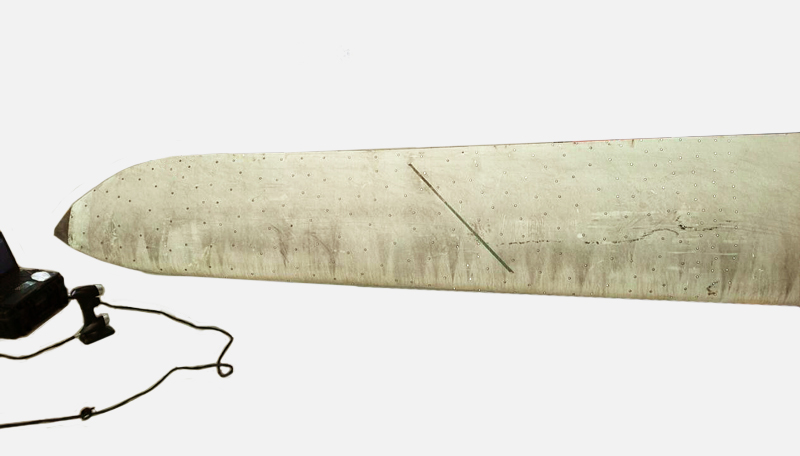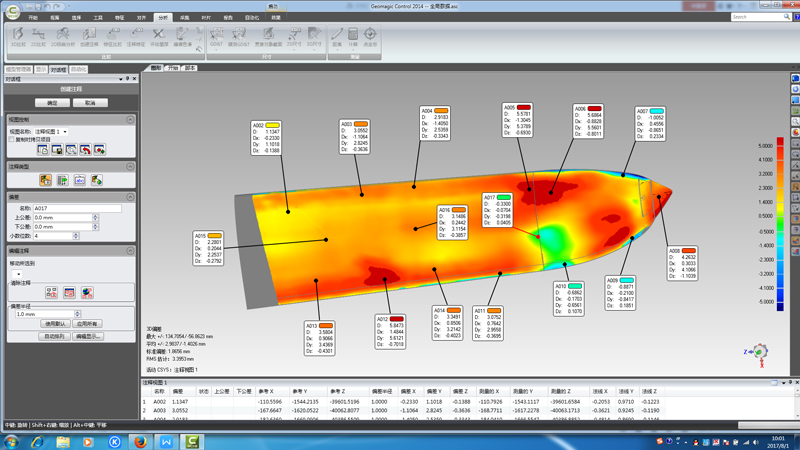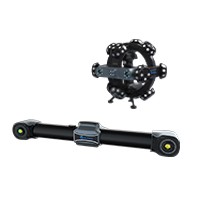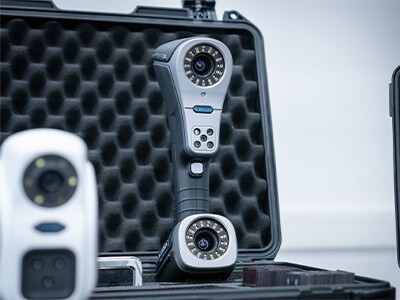Quick 3D Inspection on Large Wind Turbine Blade
The structure, dimensions and process flows of wind turbine blades are the main factors that determine the conversion efficiency of wind energy. Subtle deviations may make the blades resonate and shorten the life cycle of the blades. Therefore, 3D reconstruction of the blades carries a big weight in researching numerical simulation and FEA (Finite Element Analysis).
Q&A
Q1: Why it is complicated to manufacture wind turbine blade?
A: Blade is one of the key components of the wind turbine. It is necessary to design the blade model according to aerodynamics. Every step such as reverse engineering the blade, numerically simulating the blade airfoil flow field, 3D inspection on blade blanks, correcting deviations, plays a decisive role in the R&D and production stage of the wind turbine blade.
Q2: Is it necessary to use a handheld 3D scanner during the whole process?
A: Energy equipment is usually bulky and difficult to move. It is difficult to obtain complete and accurate 3D data by using traditional measurement methods.
Actually, many products are inseparable from 3D modeling during R&D and production stage. There are strict requirements of the blades in size and structure, therefore, quality control is particularly important.
Q3: What are the difficulties for 3D scanning on wind turbine blade?
A: Wind turbine blade is large in volume, while the manufacturer has a very high requirement in precision. Hence, the biggest difficulty is how to quickly acquire the full 3D data but also ensure ultra-high precision.
What Manufacturer Needs?
The blade is the most important components for wind turbines to convert wind energy. Correct dimension is vital to ensure stable and efficient operation of the blades. Therefore, the structure characteristics and precision of the blade have very strict requirements.
There is a batch of wind blade blanks with a volume of 6m×1m×0.4m. The manufacturer needs to obtain the parameters of the blanks so as to get and eliminate the deviations by comparing with the standard devices. The traditional measurement methods, however, are difficult to detect and time-consuming with inevitable manual errors. As a result, an efficient and accurate 3D inspection method is being sought.
ScanTech 3D Solution
In order to improve the scanning rate and efficiency, ScanTech uses HSCAN771 3D scanner with 7 red laser crosses (1 extra red laser) to detect the large wind turbine blade. However, the blade sizes up to 6m, the errors will continue to accumulate during the whole 3D scanning process, which will terribly reduce the accuracy.
As the blade has a very strict requirement in high precision, our technical professionals will combine HSCAN771 3D scanner with MSCAN Photogrammetry System to handle it. The mutual work of HSCAN 3D scanner and MSCAN will increase the accuracy by 67% and greatly reduce the deviations of volumetric accuracy. This kind of combination method will make full use of its advantage when scanning larger workpieces.
Scanning Process
Step 1: attaching reflective markers and coding points
Step 2: use the MSCAN photogrammetry system to capture the markers and code points with different angles.
Step 3: scan the blade by HSCAN771 3D scanner and obtain 3D data.
Step 4: import the 3D data to 3D software ScanViewer and save the data file in common output formats such as iges and stl.
Step 5: fit and align the 3D model and CAD model.
Step 6: modify the deviations and optimize product development based on contrast detection.
Time Cost
Attaching markers: 8 minutes
Scanning: 15 minutes
Generate inspection report: 5 minutes
MSCAN photogrammetry system is usually used for measuring and locating large objects. On the one hand, it can collaborate with HSCAN 3D scanner to effectively reduce the cumulative errors. On the other hand, MSCAN system can be used for 3D inspection of large workpieces individually to detect product size, geometric deformation, etc.
The perfect match between HSCAN and MSCAN has experienced performance on scanning other large-scale objects. You can read the following cases:
Scientific Research on 3D Scanning of Helicopter
6-Step Guide to 3D Measuring on Large Workpieces
















